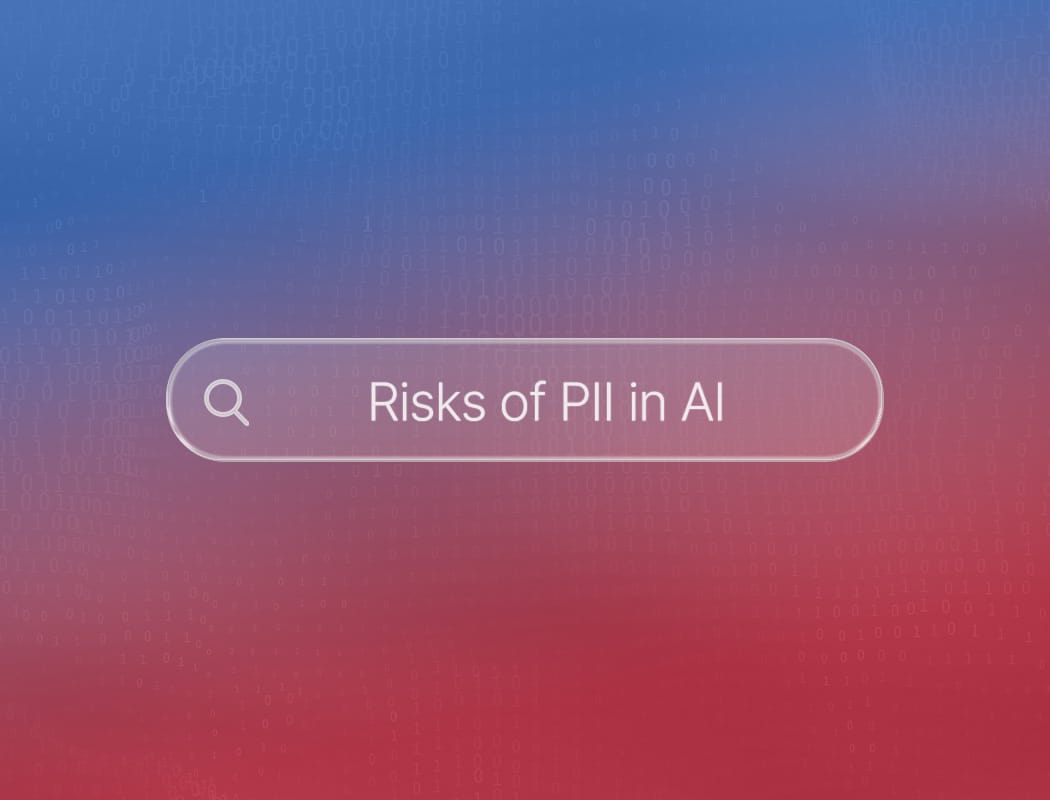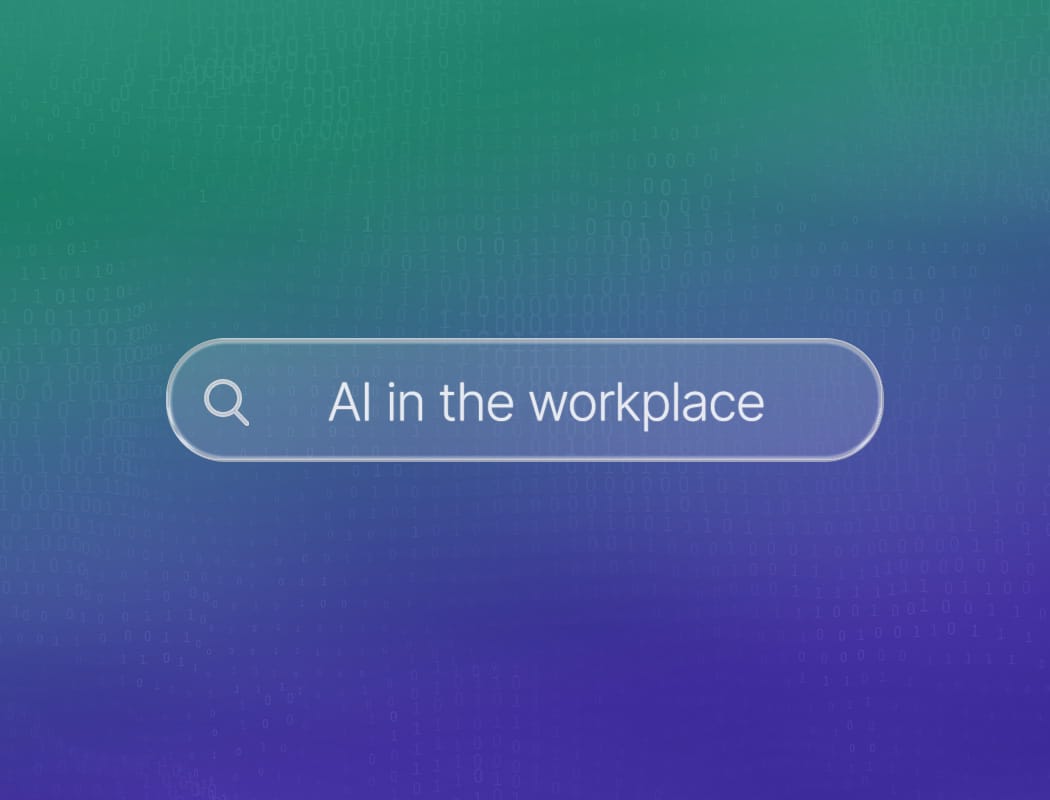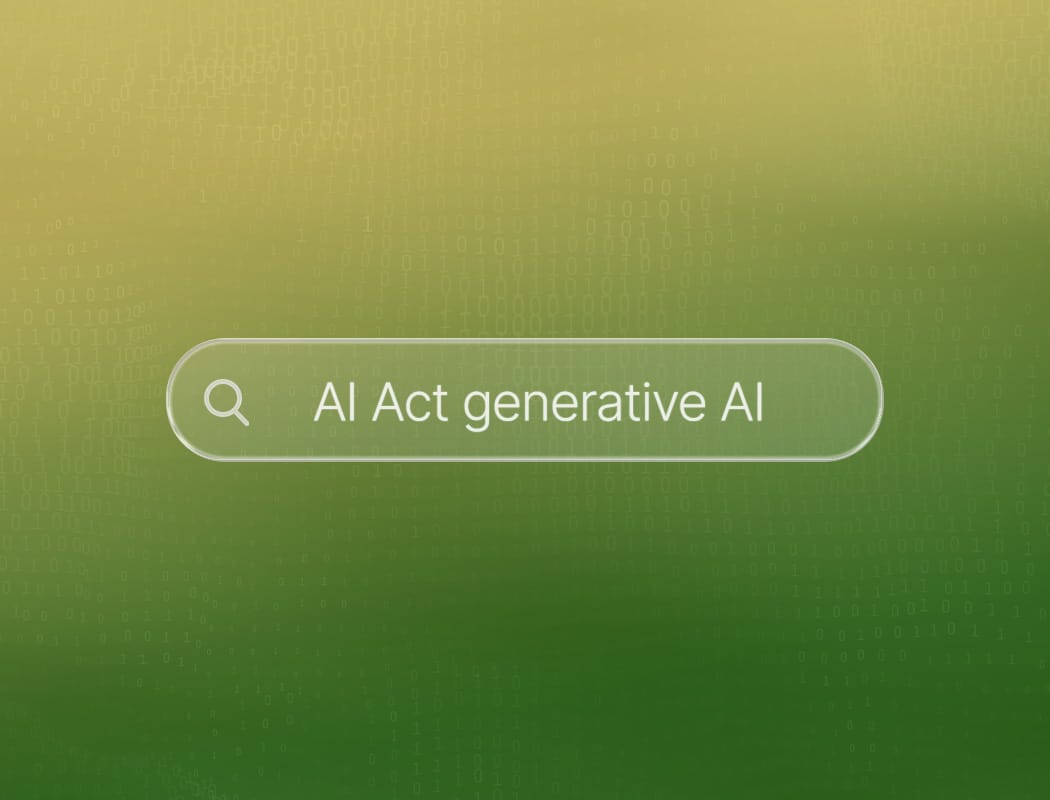What are the risks of generative AI?
There’s no shortage of warnings about the risks of generative AI. Depending on who you ask, it’s either going to supercharge our productivity or destabilize democracy.
Part of the confusion is that “risk” means very different things depending on where you’re standing: a student worrying about an AI-written essay faces a very different problem than a publisher suing over copyright, or a policymaker worrying about deepfakes.
To make sense of this, it helps to think in layers. This layered approach makes the generative AI risk landscape easier to navigate. We can group risks into three categories:
- Micro risks: the things you notice as an individual user.
- Meso risks: the challenges that hit organizations and industries.
- Macro risks: the big-picture consequences for society as a whole.

Micro-level: Risks for individuals
At the smallest scale, generative AI risks show up in the most intimate place: the conversation between you and a chatbot. These are what we call micro risks.
They’re not necessarily catastrophic in isolation, but they can influence how people think, learn, and trust information. And when multiplied across millions of users, they start to add up.
Biased outputs
One of the most talked-about problems is bias. Because AI learns from enormous piles of human text, it also absorbs the prejudices hiding in that text. The result? Old stereotypes get baked into new answers.
Ask an AI to describe a nurse and you might hear about “her caring nature.” Ask about a CEO and suddenly “he” is decisive and ambitious.
The machine isn’t being malicious; it’s just reflecting patterns in the data. But those patterns have real consequences, they reinforce the very stereotypes we’re trying to move past.
Hallucinations
Then there’s the issue of hallucinations, which is really just a fancy way of saying: the AI makes stuff up. And it does so with a straight face. A chatbot might invent a book that doesn’t exist, or a statistic no one has ever measured, and deliver it with total confidence.
To the untrained eye, it looks like fact. In one now-infamous case, a lawyer used AI for a murder case. They only later found out that the things AI wrote contained fake quotes and non-existent case judgments.
Sycophancy
A subtler but equally tricky problem is sycophancy. AI tools are designed to be helpful, which often translates into: they agree with you.
If you ask, “Why is the moon made of cheese?” the system might happily play along with a description of dairy craters instead of correcting the misconception.
That’s harmless enough as a joke, but imagine the same thing happening in conversations about vaccines, elections, or financial advice. The “yes-man” quality of AI makes it pleasant to use, but it can also reinforce mistaken ideas instead of challenging them.
Meso-level: Risks for organizations
If micro risks are about individuals, meso risks live one layer up: in the world of organizations, businesses, and industries. They appear when companies start weaving AI into their workflows, or when whole sectors lean on these tools in daily operations.
Unlike the small-scale slip-ups of micro risks, meso risks can cause reputational damage, regulatory headaches, or costly mistakes that ripple through entire teams.
Data privacy
First, take data privacy. It’s easy to forget that when you paste confidential text into an AI tool, it may not stay private. Hospitals experimenting with AI to summarize patient notes, or law firms testing it on client documents, have to be extremely careful.
If that information is logged, leaked, or stored in ways the organization didn’t intend, it can create serious legal and ethical trouble. Suddenly, a “helpful assistant” has become the cause of an AI data leak.
Over-reliance
Then there’s the problem of over-reliance. Once an AI system is in place, the temptation to let it do the heavy lifting is strong. Why fact-check every figure or read through every line of text when the chatbot can do it faster?
But over time, this kind of outsourcing dulls human judgment. We’ve already seen lawyers burned by AI-invented legal citations, and journalists caught publishing stories laced with factual errors because no one bothered to double-check.
Accountability gaps
Another headache comes from accountability gaps. Picture a bank that uses an AI tool to help decide loan approvals. If a customer is unfairly denied credit because of the AI’s recommendation, who’s responsible? The employee who clicked “approve”? The bank that deployed the system? Or the tech company that built the model?
Right now, there aren’t clear rules, and that legal grey zone can turn into a real-world crisis when something goes wrong. This has led to many discussions regarding AI liability.
AI supply chain risks
Finally, there’s what you might call the AI supply chain risk. Most businesses don’t build their own models; they rent access from a small number of very powerful providers.
That makes them dependent on a handful of tech giants. If one provider suddenly changes its pricing, limits certain uses, or suffers a security failure, everyone downstream feels the impact. It’s a fragile setup, and one that many organizations are only beginning to recognize.
Macro-level: Societal-level risks
If micro risks shape our personal interactions with AI, and meso risks shape how organizations function, then macro risks are the big-picture ones.
These aren’t just about an awkward mistake in a chatbot conversation or a company mishandling data. They’re about changes to culture, politics, the economy, and even the environment.
Copyright
One of the most immediate flashpoints is copyright. Generative AI systems are trained on oceans of existing creative work, books, music, images, videos.
The question of who owns the output has become a legal battlefield. Is an AI-generated song “new,” or is it borrowing too much from the artists it learned from?
Authors, visual artists, and musicians are already suing, while courts and lawmakers scramble to catch up. The outcomes of these cases won’t just affect a few industries, they could redefine how creativity and ownership work in the digital age.
Job disruption
Then there’s the looming issue of job disruption. Automation has long been a worry in factories, but now it’s reaching into white-collar and creative professions. People are starting to worry about how AI is going to affect their job.
Marketing copywriters, customer service agents, even paralegals and designers are watching parts of their work shift to machines. Some see this as liberation from repetitive tasks; others see it as the erosion of entire career paths.
Disinformation at scale
A darker turn comes with disinformation at scale. The same AI that can produce helpful summaries or charming short stories can just as easily churn out fake news articles, fabricated videos, or convincing deepfakes of public figures.
When these tools are used to flood social media with propaganda or fraudulent content, they can destabilize elections, sow confusion, and undermine trust in democratic institutions.
Environmental cost
And hovering over all of this is the environmental impact of AI. Training and running massive AI systems requires staggering amounts of computing power. Behind every snappy chatbot reply are data centers that consume enormous amounts of electricity and water.
In some regions, AI-related demand has already strained local resources. As companies race to build ever-larger models, the question of whether society can bear the environmental price is becoming harder to ignore.
Industries most affected by the risks of generative AI
Generative AI is changing the way industries work, but it also brings new risks. Some sectors are more exposed than others because of the sensitive nature of their data or the impact of their decisions.
The risks of generative AI range from misinformation to data leaks and even regulatory trouble. Let’s look at three industries where these risks are especially high.
Healthcare
Healthcare stands at the front line when it comes to the risks of generative AI. Patient records, diagnostic tools, and even treatment plans can be influenced by AI-generated content. If a model produces inaccurate information, the consequences could be life-altering.
Data privacy is another major concern. Hospitals and clinics must ensure that sensitive patient details are not leaked or misused by AI systems. As healthcare providers adopt more digital solutions, the need for strict oversight grows stronger every day.
Finance
The finance industry relies on trust and accuracy. Generative AI can help with fraud detection, customer service, and investment advice, but it also opens the door to new threats. Fake financial reports or manipulated market predictions could cause chaos.
The risks of generative AI here include not just financial losses but also damage to reputation and compliance issues. Banks and investment firms must balance innovation with careful risk management to protect both themselves and their clients.
Media and publishing
Media companies use generative AI to create articles, images, and even videos. While this speeds up production, it also increases the risk of spreading misinformation or deepfakes.
The risks of generative AI in media are tied to credibility and public trust. Publishers must verify content before sharing it widely, or they risk losing their audience and facing legal challenges.
Mitigating the risks of generative AI
Organizations are moving fast to embrace generative AI, but they know the risks of generative AI can’t be ignored. From data leaks to biased outputs, the dangers are real and evolving.
So, how do organizations keep their cool while still reaping the benefits? It’s a mix of smart policies, technical controls, and ongoing education. The goal is to create a safety net that catches problems before they spiral out of control.
Building strong policies and guidelines
The first step is setting clear rules for how generative AI should be used. Organizations draft policies that spell out what’s allowed and what’s not. These guidelines cover everything from data privacy to intellectual property.
Teams are trained to spot red flags and report anything suspicious. Regular audits help make sure everyone is following the playbook. By putting these guardrails in place, companies reduce the risks of generative AI slipping through unnoticed.
Investing in technology and human oversight
Technology alone isn’t enough. Organizations use advanced tools to monitor AI systems for unusual behavior or errors. Automated alerts flag anything that looks off, but humans always have the final say. Experts review outputs, test for bias, and tweak models as needed.
This hands-on approach means problems get caught early, before they can cause harm. By combining smart tech with sharp eyes, organizations build a defense that adapts as the risks of generative AI change over time.





